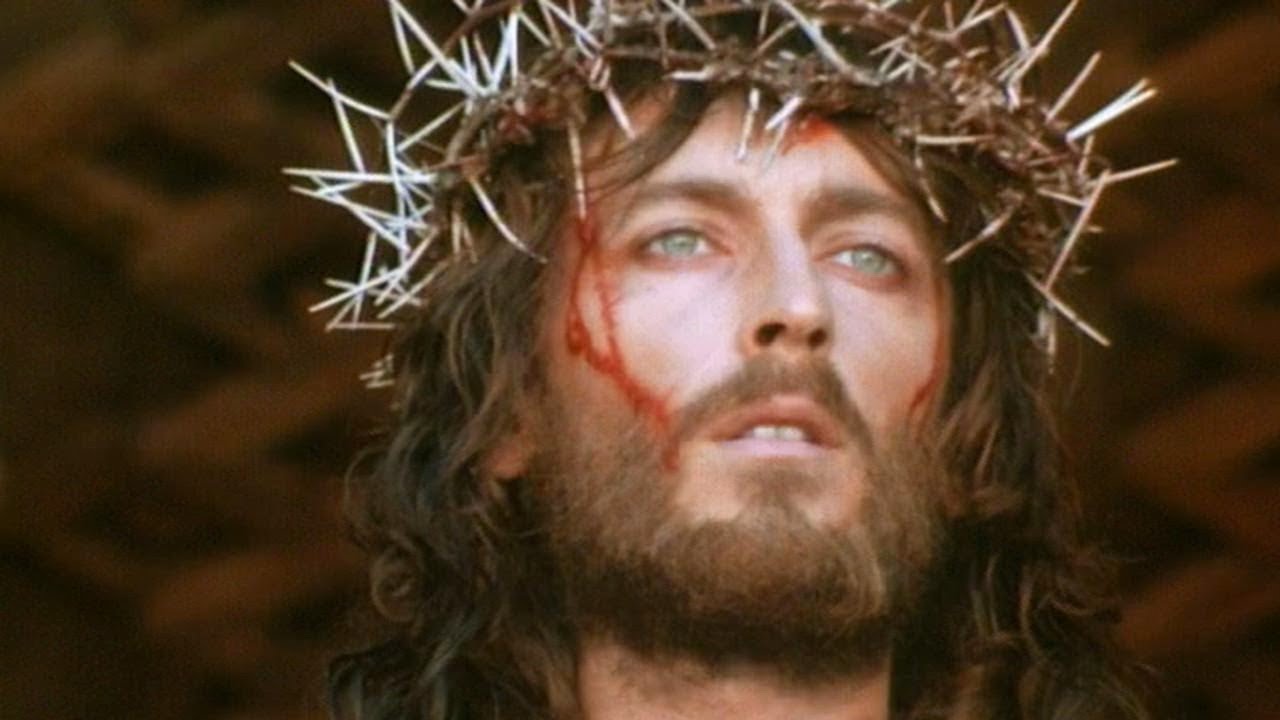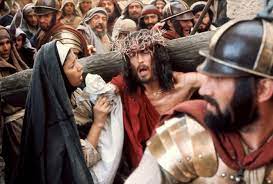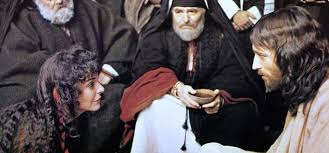Jesus of Nazareth (1977)

Jesus of Nazareth (1977) – A Timeless and Reverent Masterpiece of Biblical Storytelling
Jesus of Nazareth, directed by Franco Zeffirelli and first aired in 1977, is widely regarded as one of the most profound and beloved portrayals of the life of Jesus Christ ever brought to screen. Spanning approximately six hours over multiple episodes, this miniseries carefully and artfully chronicles the entire life of Jesus—from his miraculous birth through his teachings, crucifixion, and resurrection. It has become a cultural and spiritual landmark, treasured by viewers worldwide for its heartfelt storytelling, reverence, and cinematic craftsmanship.
Story and Narrative Scope: A Comprehensive Biblical Epic
Unlike many adaptations that focus narrowly on the final days of Jesus’ life, Jesus of Nazareth ambitiously covers the full arc of His earthly journey. The narrative opens with the annunciation to Mary and the Nativity, moves through Jesus’ childhood and baptism, then follows His ministry, parables, miracles, interactions with disciples, conflicts with religious authorities, culminating in His passion, death, and resurrection.
The series is deeply rooted in the canonical Gospels, especially drawing from Matthew, Mark, Luke, and John, while integrating apocryphal elements and historical context to enrich the story. This comprehensive scope allows audiences to witness the development of Jesus’ character, teachings, and the responses He inspired in both followers and adversaries.
The storytelling is marked by careful pacing, unfolding key events with a balance of grandeur and intimacy. From the humble manger scene to the grandeur of the Sermon on the Mount, the series captures the emotional and spiritual gravity of each moment, inviting viewers into the profound mystery of the incarnation and redemption.
Direction and Vision: Franco Zeffirelli’s Meticulous Craftsmanship
Franco Zeffirelli, already renowned for his visually rich and detailed adaptations of Shakespearean dramas, brought to Jesus of Nazareth a director’s eye that blended epic scope with human intimacy. Zeffirelli’s direction is characterized by its reverence for the source material and its dedication to authenticity, both visually and thematically.
Zeffirelli approached the miniseries with great care to respect religious sensitivities, while also crafting a compelling cinematic experience accessible to secular audiences. His use of location shooting across Italy and Morocco lends the series an authentic atmosphere that transports viewers to first-century Judea.
The director’s attention to detail extends to costumes, set design, and cultural nuances, making the world of Jesus and His followers feel vivid and tangible. Scenes are composed thoughtfully, often using wide shots to convey the vastness of the landscapes or intimate close-ups to explore character emotions.
Zeffirelli balances moments of quiet reflection with scenes of dramatic tension, such as the confrontations with Pharisees or the harrowing trial before Pontius Pilate. His ability to weave these elements together results in a seamless narrative flow that maintains engagement over the extended runtime.
Performances: Robert Powell’s Iconic Portrayal of Jesus
Central to the series’ enduring impact is Robert Powell’s portrayal of Jesus. Powell’s performance is widely celebrated for its serene intensity, capturing both the divine nature and profound humanity of Christ. His striking blue eyes and calm demeanor imbue the character with a sense of compassion, wisdom, and otherworldliness.
Powell conveys Jesus’ teachings with gentle authority, and his silence often speaks as powerfully as his words. He adeptly portrays Jesus’ moments of joy, sorrow, anger, and resolve, bringing emotional depth without resorting to overt dramatics.
The supporting cast is equally impressive. Olivia Hussey as Mary, the mother of Jesus, provides a tender and poignant presence, embodying faith and maternal love. Anne Bancroft portrays Mary Magdalene with nuance, highlighting her transformation from a troubled past to devoted follower. Laurence Olivier’s role as Nicodemus adds gravitas, while other actors such as Anthony Quinn, James Mason, and Rod Steiger enrich the tapestry of characters with memorable performances.
This stellar ensemble elevates the series beyond a mere biblical retelling, turning it into a profound exploration of human and divine relationships.
Cinematography and Music: Creating an Atmosphere of Reverence
The visual and musical elements play a vital role in shaping the series’ tone. Cinematographer Ennio Guarnieri employs natural light and soft earth tones to create a warm, immersive environment. The landscapes, from arid deserts to bustling villages, are captured with grandeur and realism, underscoring the historical authenticity.
The careful framing of scenes—such as the close-ups during Jesus’ sermons or the sweeping views of crowds gathered for miracles—enhances the storytelling. The use of slow motion and lingering shots allows viewers to absorb the spiritual significance of key moments.
Maurice Jarre’s musical score is both evocative and understated. The themes range from hauntingly beautiful to uplifting, complementing the emotional arcs without overwhelming the narrative. The music weaves through the series like a spiritual thread, enhancing scenes of prayer, revelation, and redemption.
Together, the cinematography and score create an atmosphere that invites contemplation and connection, making the viewing experience both visually and emotionally rich.
Themes and Spiritual Resonance
Jesus of Nazareth explores core Christian themes with nuance and depth. The miniseries highlights Jesus’ teachings on love, forgiveness, humility, and faith, making them accessible and relatable. Parables and miracles are portrayed not merely as historical events but as timeless lessons with relevance for all audiences.
The series delves into the tension between divine destiny and human free will, portraying the challenges Jesus faces from political and religious powers, as well as doubts and struggles within His closest followers.
Moreover, it underscores the universal message of hope and salvation. Jesus is depicted not just as a religious figure but as a symbol of peace and compassion, whose message transcends time and culture.
The miniseries also embraces the mystery of the incarnation—the union of divine and human natures in Jesus—inviting viewers to ponder the profound theological truths behind the narrative.
Accessibility and Impact: Bridging Faith and Curiosity
One of the remarkable achievements of Jesus of Nazareth is its ability to appeal both to devout believers and those curious about the historical and spiritual figure of Jesus. Its respectful tone and comprehensive storytelling provide a valuable resource for religious education and personal reflection.
While maintaining fidelity to the Gospels, the miniseries avoids preachiness or overt proselytizing. Instead, it allows the story to unfold naturally, encouraging viewers to draw their own conclusions and engage with the material on a personal level.
Its length and detailed approach allow for exploration of characters often sidelined in other adaptations—such as the disciples, the Pharisees, and Roman authorities—offering a multi-dimensional view of the cultural and political environment of the time.
Because of its accessibility, the series has been broadcast worldwide, translated into multiple languages, and remains a popular choice during religious holidays like Easter and Christmas.
Historical and Cultural Context of Production
Produced in the 1970s, Jesus of Nazareth emerged during a period when epic biblical dramas were popular on both television and film. Yet, unlike many contemporaries that favored spectacle over substance, Zeffirelli’s work stood out for its devotion to authenticity and spiritual depth.
The production involved extensive research to ensure historical accuracy, from costume design to dialects and customs. The international cast and crew contributed to the high production values that give the miniseries its enduring appeal.
Its release on television made it accessible to millions, at a time when religious programming was gaining renewed interest in the West. The series contributed to a broader cultural conversation about faith, history, and spirituality.
Legacy: A Classic That Endures Through Generations
Decades after its premiere, Jesus of Nazareth remains a benchmark for biblical adaptations. It is frequently re-aired, studied in academic and religious settings, and praised by critics and audiences alike.
The miniseries influenced countless filmmakers and set a standard for respectful and artistic portrayals of religious narratives. Its success paved the way for other large-scale faith-based productions and demonstrated the power of television to tell stories of profound spiritual significance.
Robert Powell’s portrayal has become iconic, influencing public perception of Jesus around the world. The series as a whole continues to inspire viewers with its messages of hope, compassion, and redemption.
Conclusion: A Reverent and Profound Journey Through the Life of Jesus
In summary, Jesus of Nazareth (1977) is more than just a miniseries—it is a deeply moving spiritual experience that combines masterful direction, exceptional performances, and rich storytelling to bring to life the story of Jesus Christ in all its complexity and beauty.
Franco Zeffirelli’s meticulous craftsmanship, Robert Powell’s haunting performance, the evocative music by Maurice Jarre, and the dedication of the entire cast and crew create a work that honors the sacred narrative while inviting viewers of all backgrounds to engage with its timeless truths.
For anyone seeking a cinematic exploration of faith that is both reverent and accessible, Jesus of Nazareth stands as a timeless classic, a treasure of television history, and a profound invitation to reflect on the life and teachings of one of history’s most influential figures.











